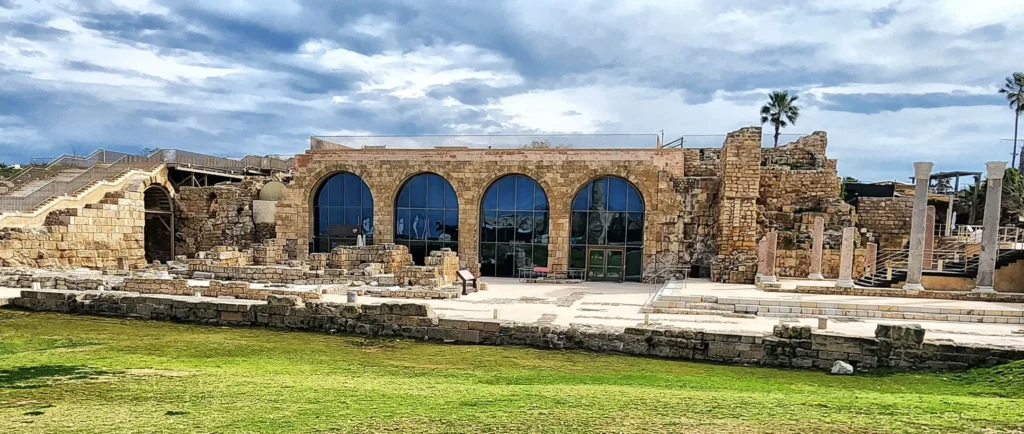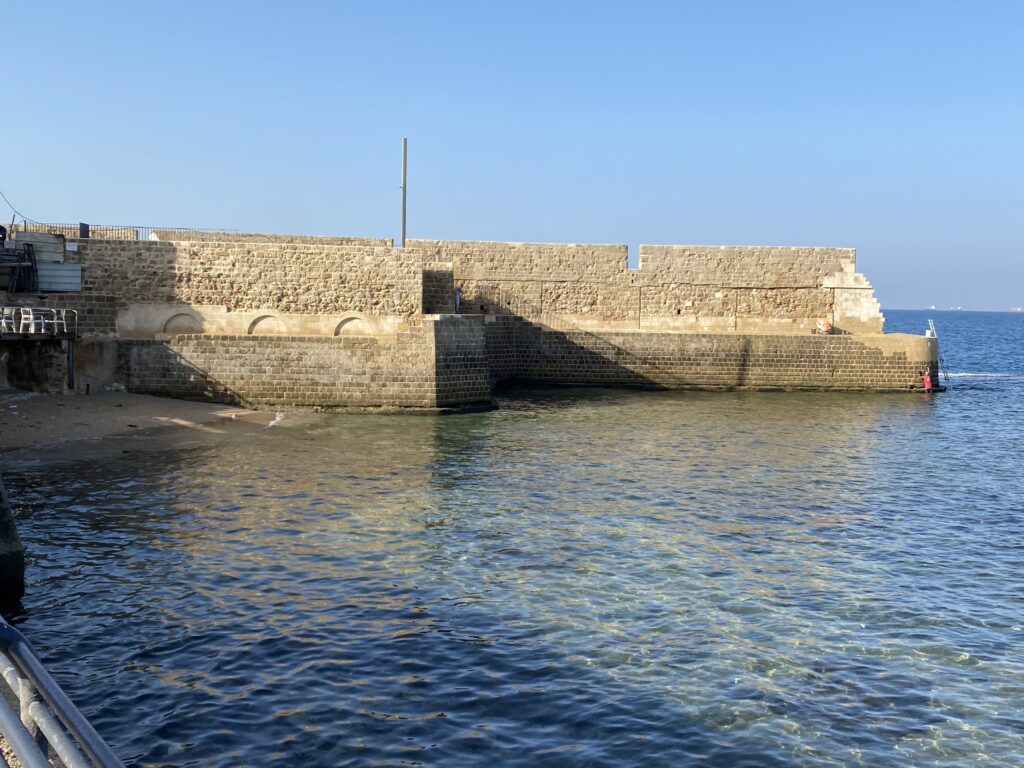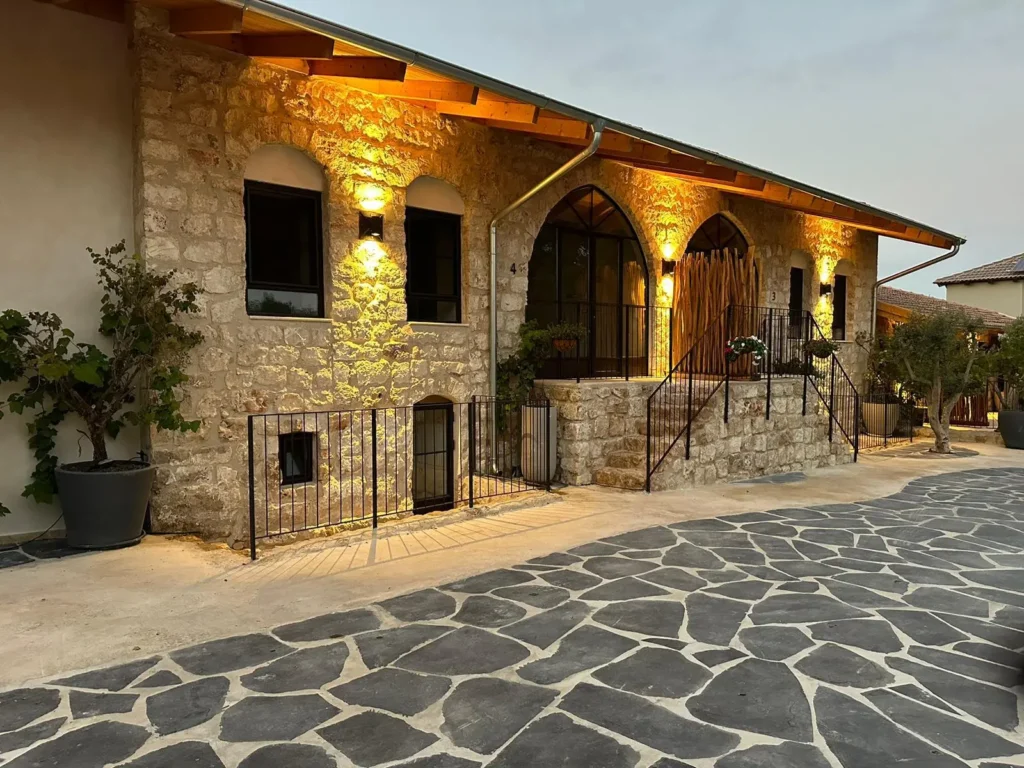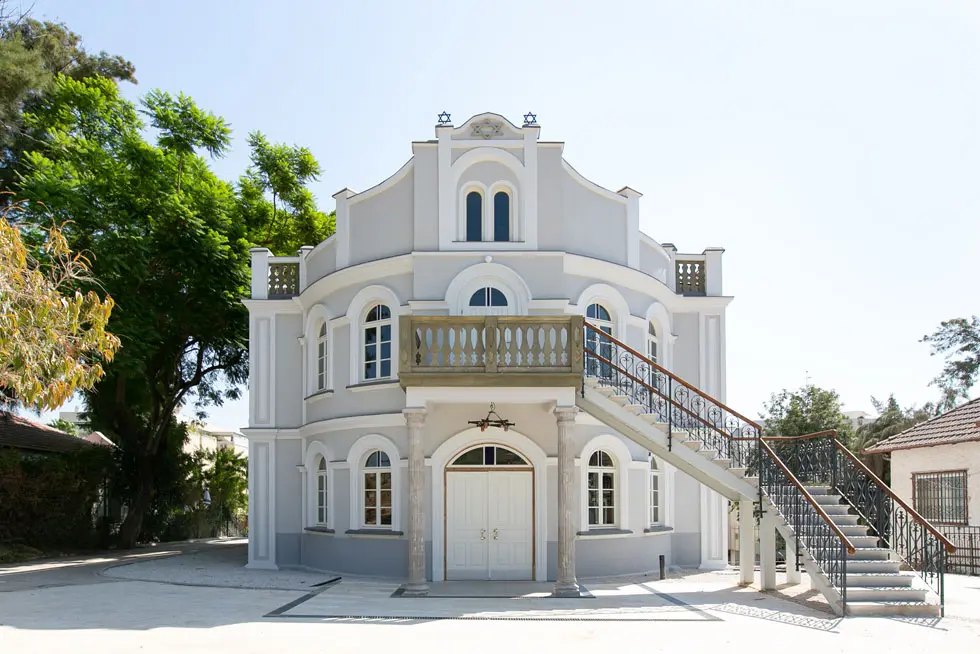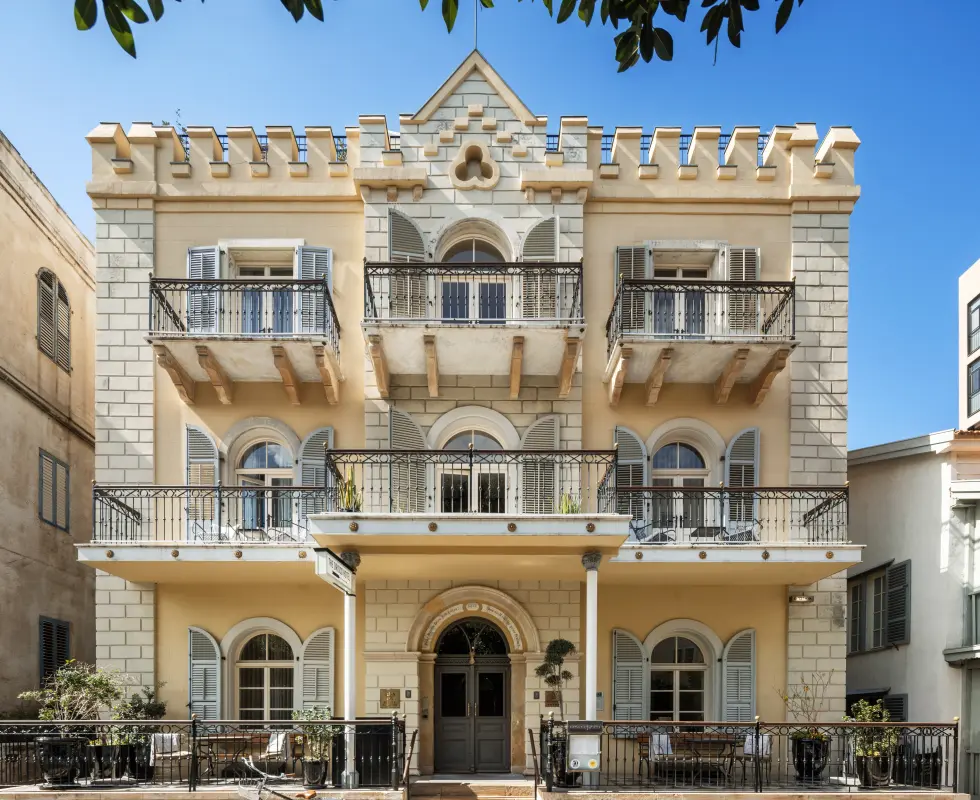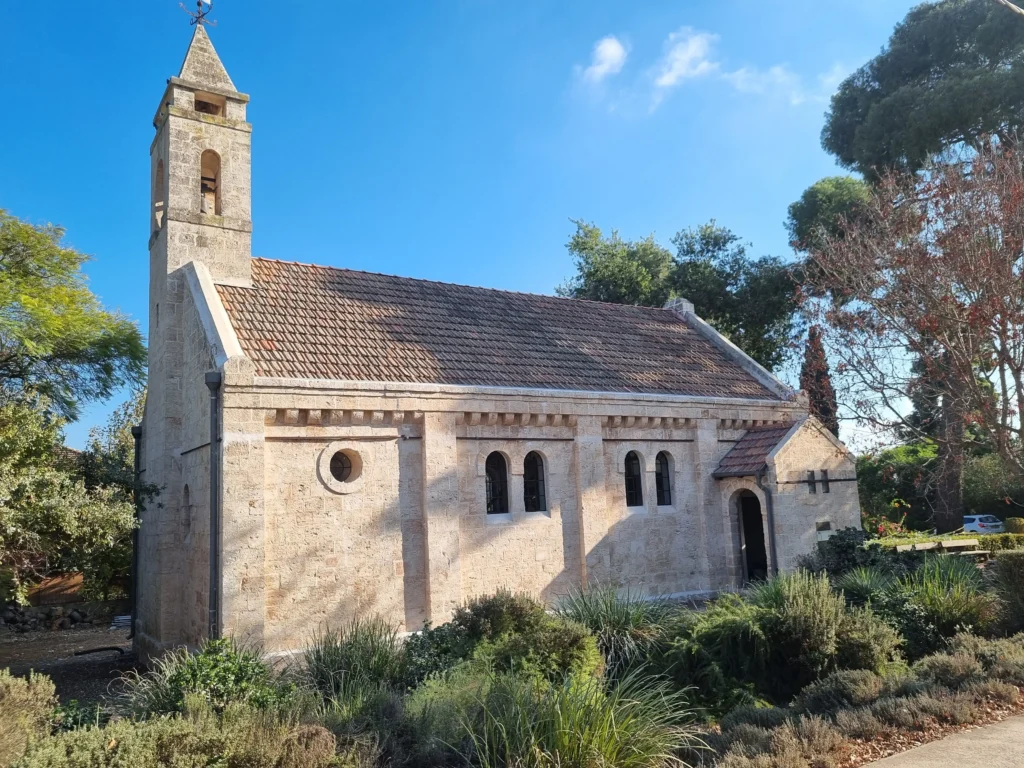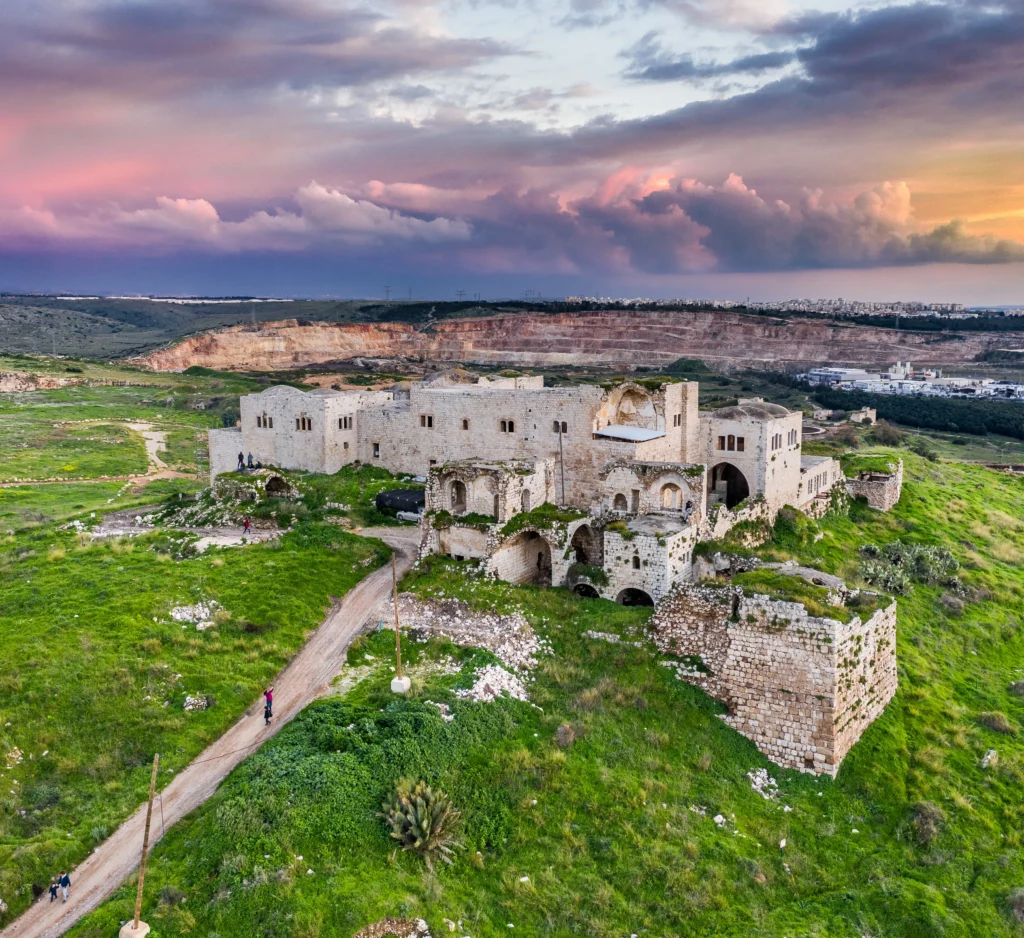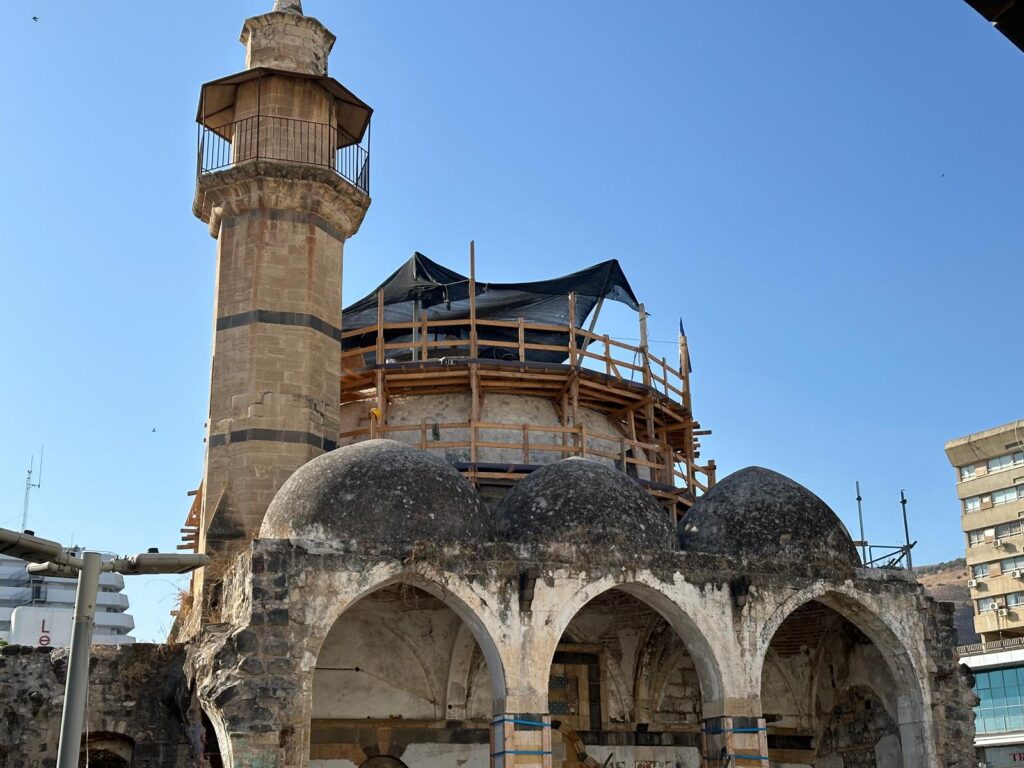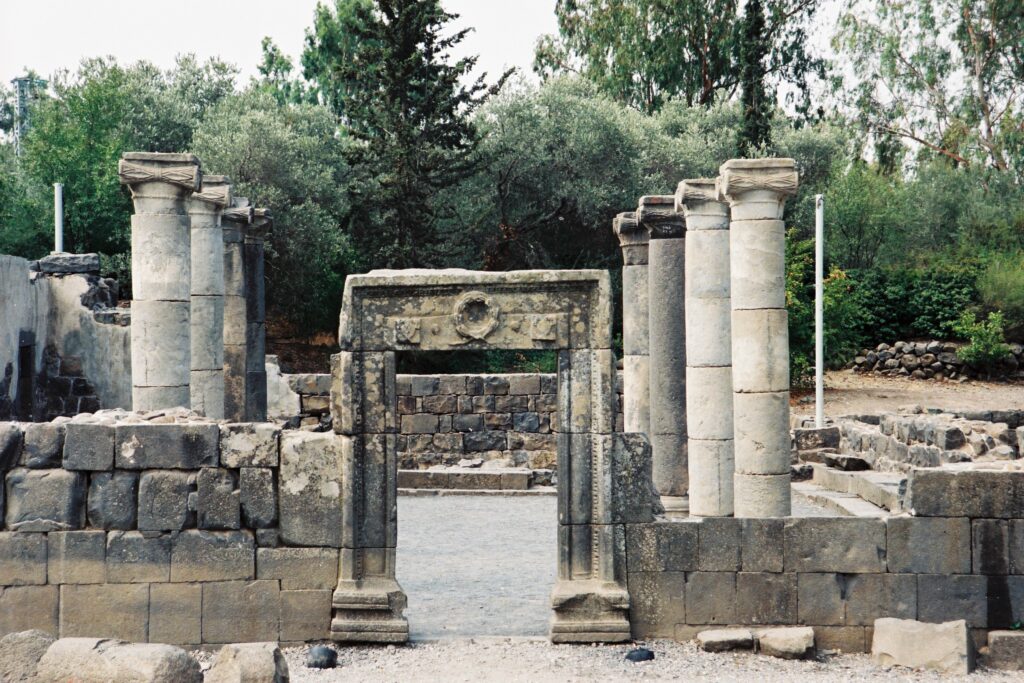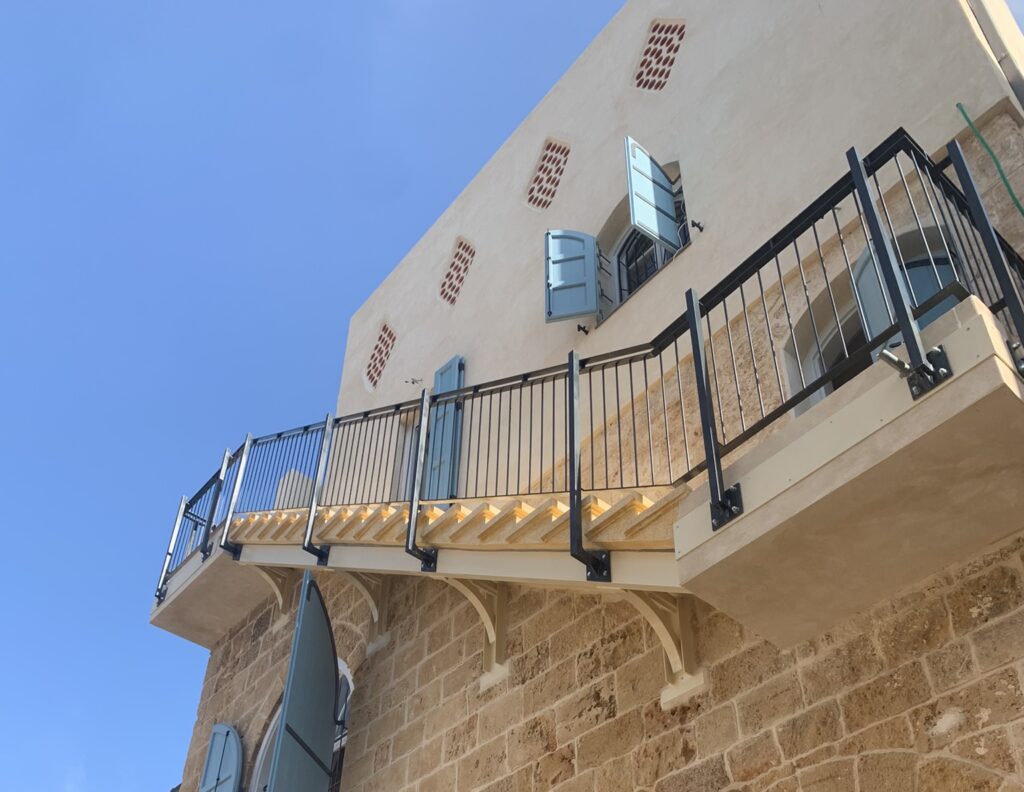Historical Background
At the center of the ancient port of Caesarea stands a remarkable historic building conservation project that integrates archaeology, heritage, and structural engineering.
The vaulted system, constructed during the reign of Herod, was part of an impressive architectural complex that included a massive staircase leading to a temple dedicated to Emperor Augustus. The original structure included four southern barrel vaults, six central barrel vaults, and four northern barrel vaults. On either side were “sand boxes,” creating a unified architectural-structural enclosure—a purposeful shell that framed the sacred space.
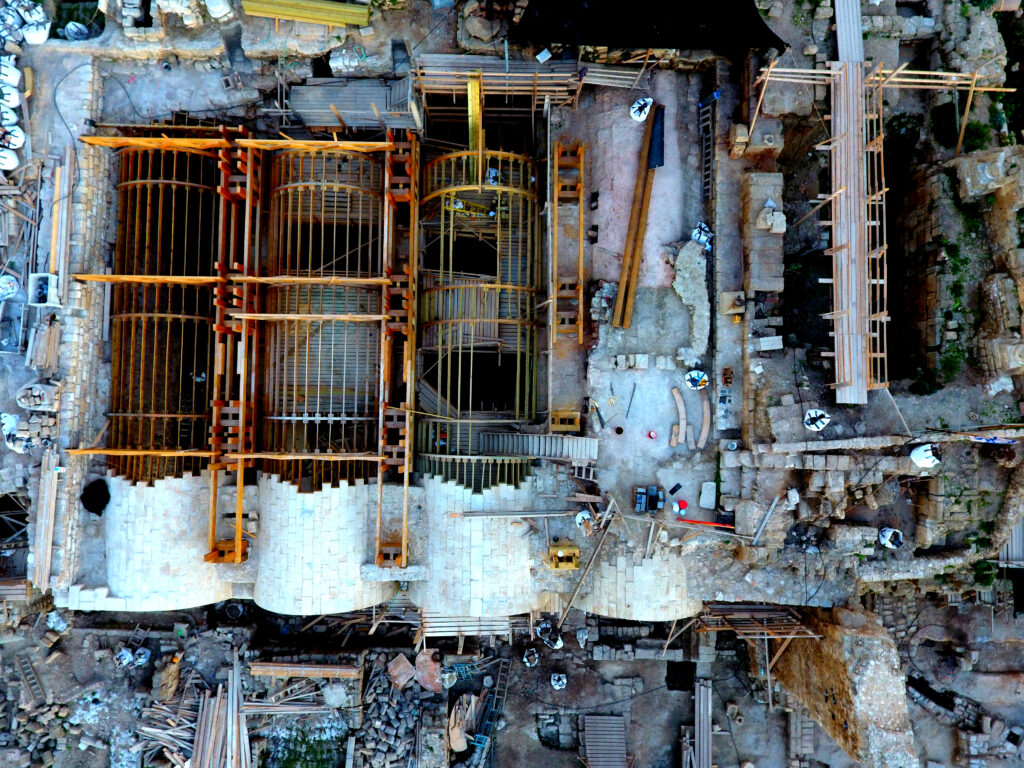
Condition Prior to Conservation
Over the centuries, the structure suffered extensive damage due to natural aging, warfare, and deliberate destruction. Several of the barrel vaults had collapsed, and many walls had lost their load-bearing capacity. Only Vault 1 remained fully intact, serving as a silent testament to Herodian grandeur. Vault 4 retained only a narrow strip supported by the remnants of the original vault.
Engineering Challenges
The core challenge of the project was integrating historic building conservation with the need to create a modern and structurally safe visitor center.
Our work involved stabilizing the archaeological remains during excavation to a depth of approximately 8 meters, reconstructing walls and barrel vaults, and reinforcing surviving architectural elements such as arches, walls, and openings to adapt the structure for contemporary public use. Ancient construction technologies were reintroduced to ensure structural stability and compatibility with the new visitor center.
The advanced engineering solutions we developed for this project reflect creative thinking—relying on existing archaeological walls and remains on one hand, and integrating modern construction that’s both durable and contextually appropriate on the other.
For example:
- Instead of using steel, which is vulnerable to corrosion near the sea, specially fabricated multilayer timber beams were imported from abroad.
- Rather than relying solely on theoretical assumptions, Flat-Jack tests were carried out to accurately measure in-situ wall loads.
- A seismic performance model was developed in collaboration with a Spanish structural engineering firm to assess earthquake resistance.
An additional challenge was the treatment of the original Herodian vault. A carefully engineered intervention was required to support the vault while replacing its stone masonry base wall with modern steel elements, allowing for safe visitor access without compromising the structural integrity of the ancient structure.
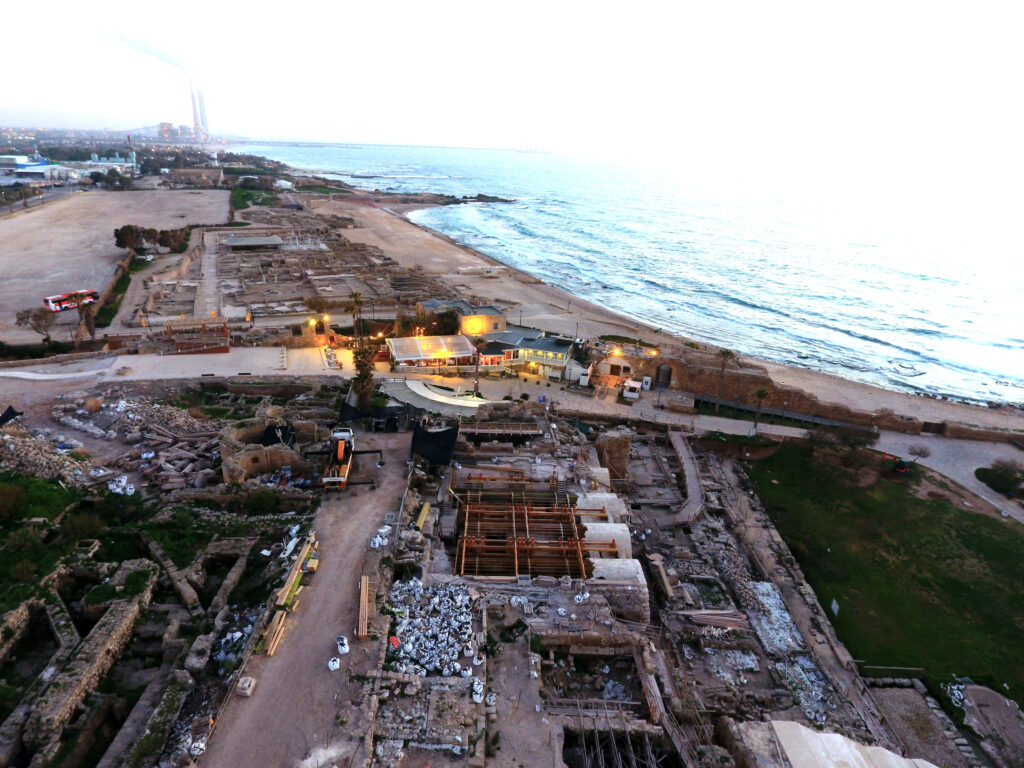
Project Outcome
Today, the reconstructed barrel vaults stand as a living testament to the successful integration of ancient and modern construction technologies. They preserve the site’s historical heritage while adapting it to the needs of contemporary visitors.
This project shows how precise engineering design, combined with respect for heritage, can create a culturally rich space that honors the past while serving the present.
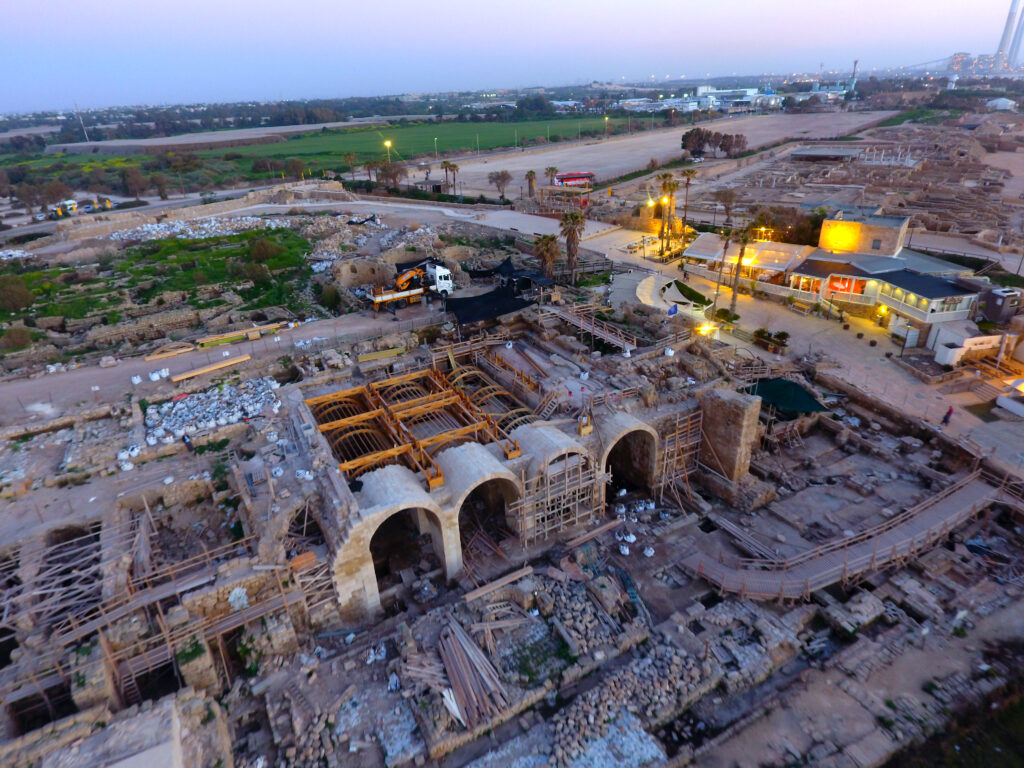
In Partnership With:
Client: Caesarea Development Corporation
Professional Supervision: Israel Antiquities Authority, Israel Nature and Parks Authority, and Ze’ev Tamkin Project Management
Architect: Arch. Danny Abuhatzeira
Archaeologists: Dr. Peter Gendelman, Dr. Uzi Ad
Conservation Execution: Israel Antiquities Authority – Execution Division, led by Yoram Sa’ad, Danny Siboni, and Tsegay Asa
Conservation Engineering: Schaffer Ronen Engineers – Yaakov Schaffer, Yehonatan Oz
Image credit: Zeev Stein, from the Pickwiki website
